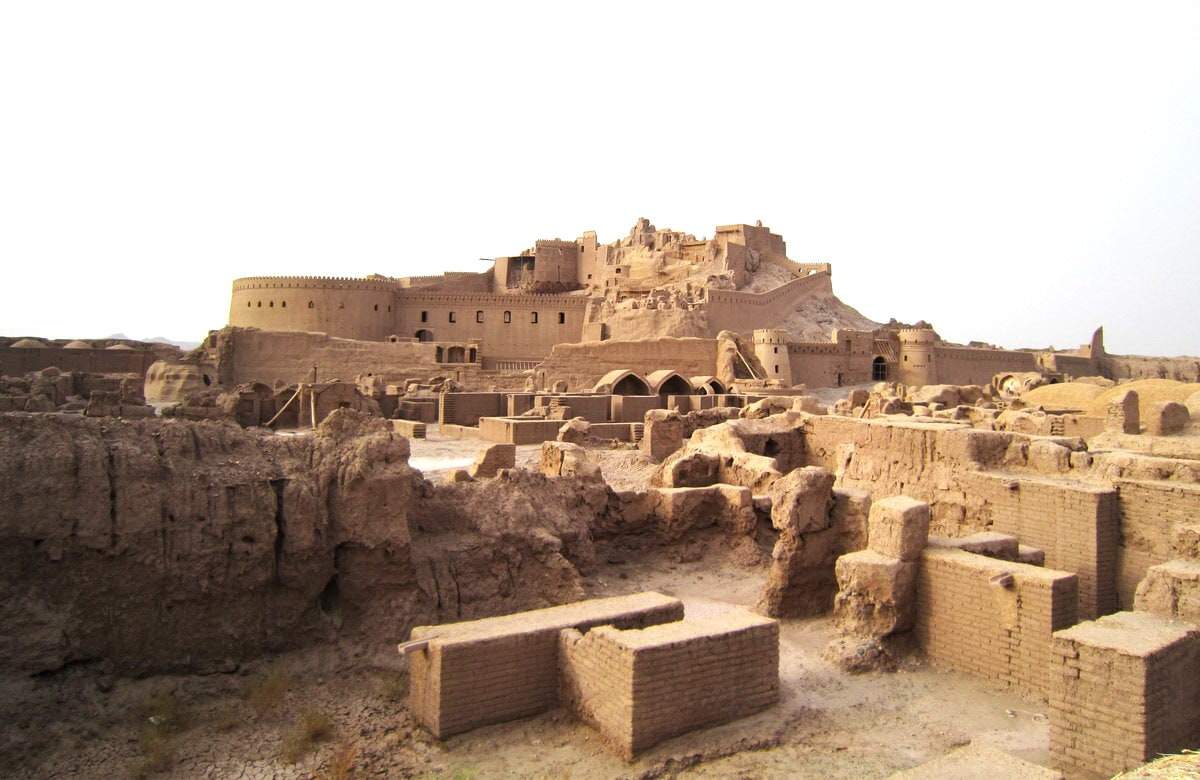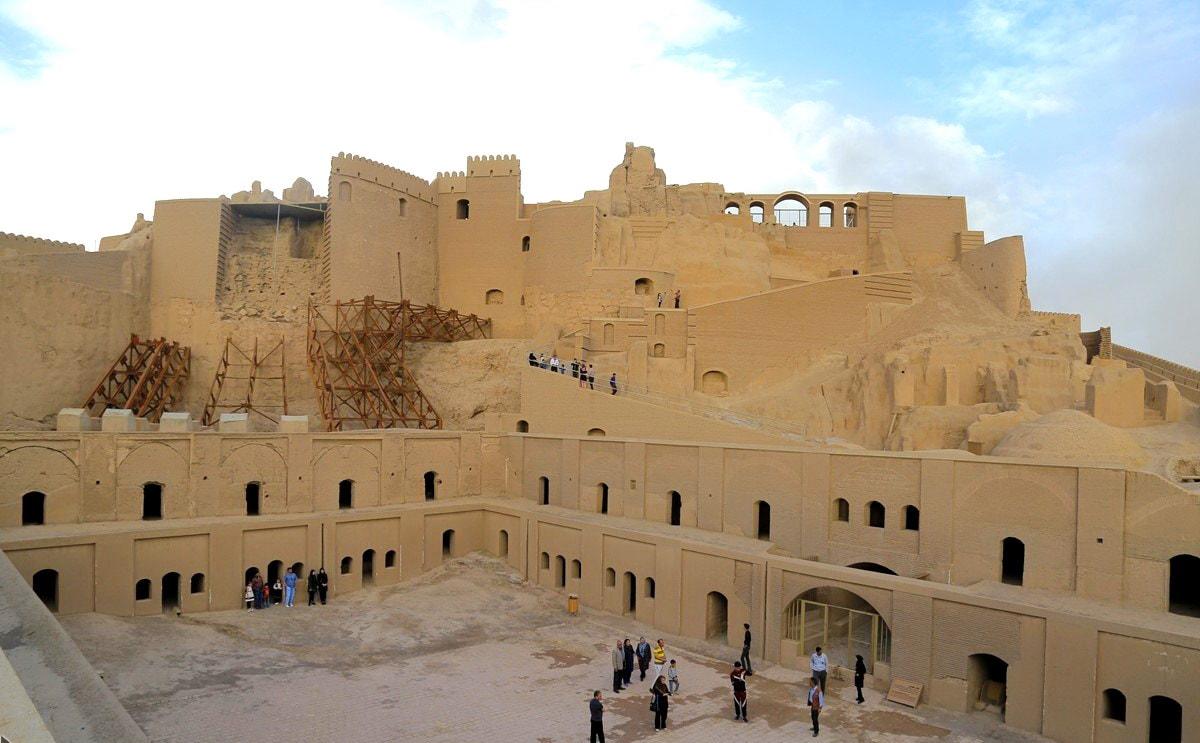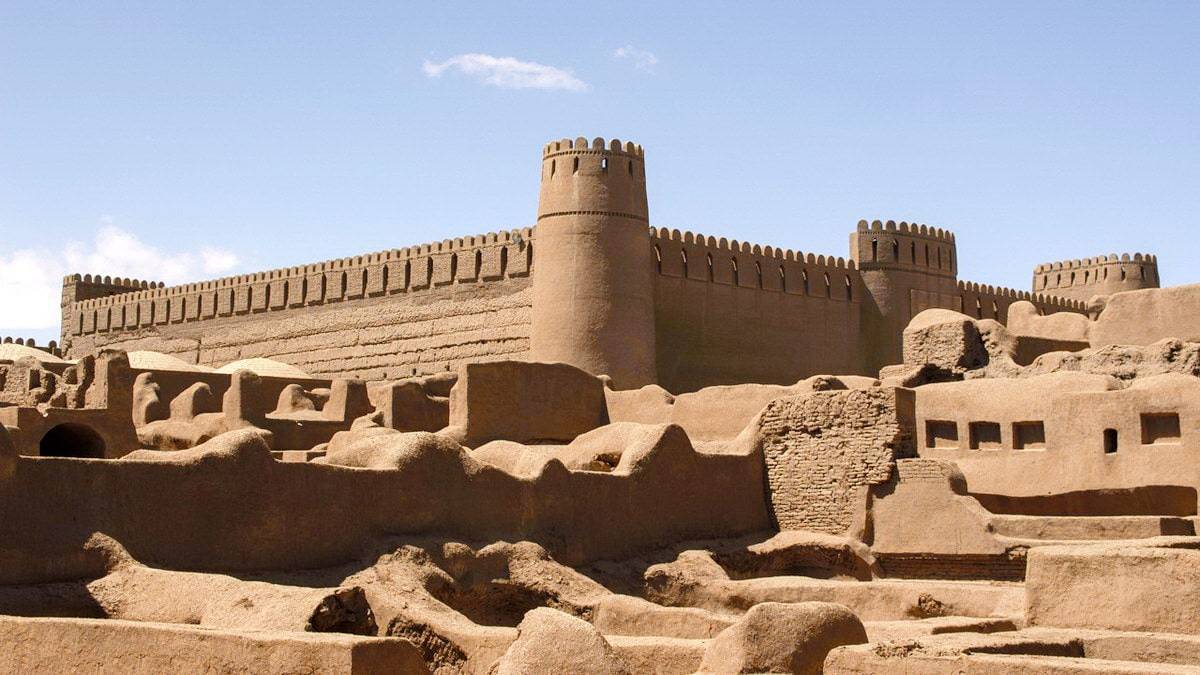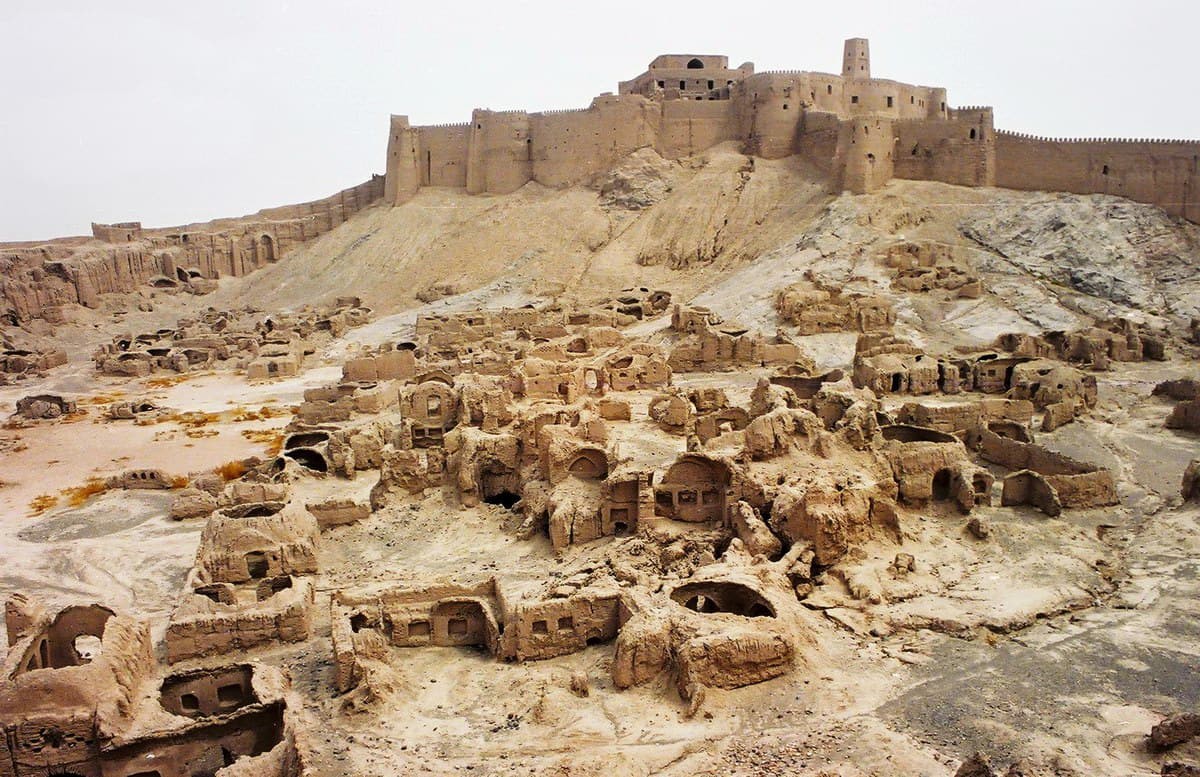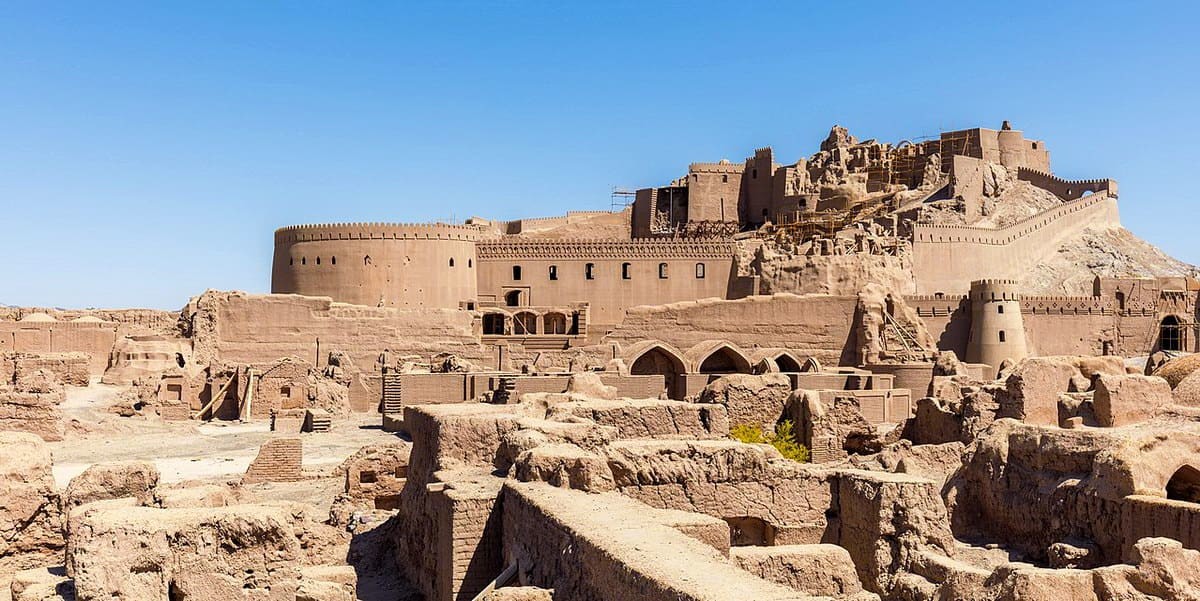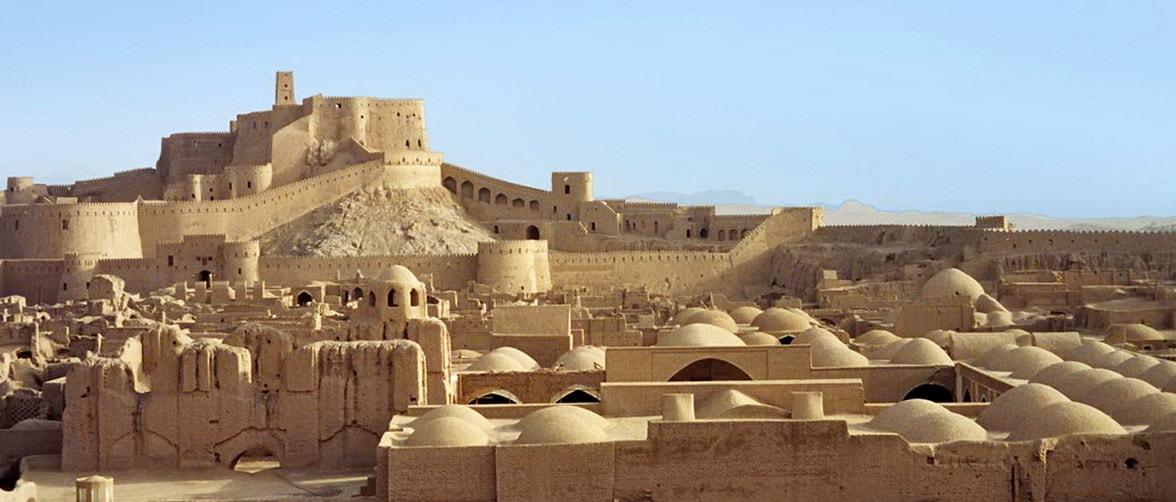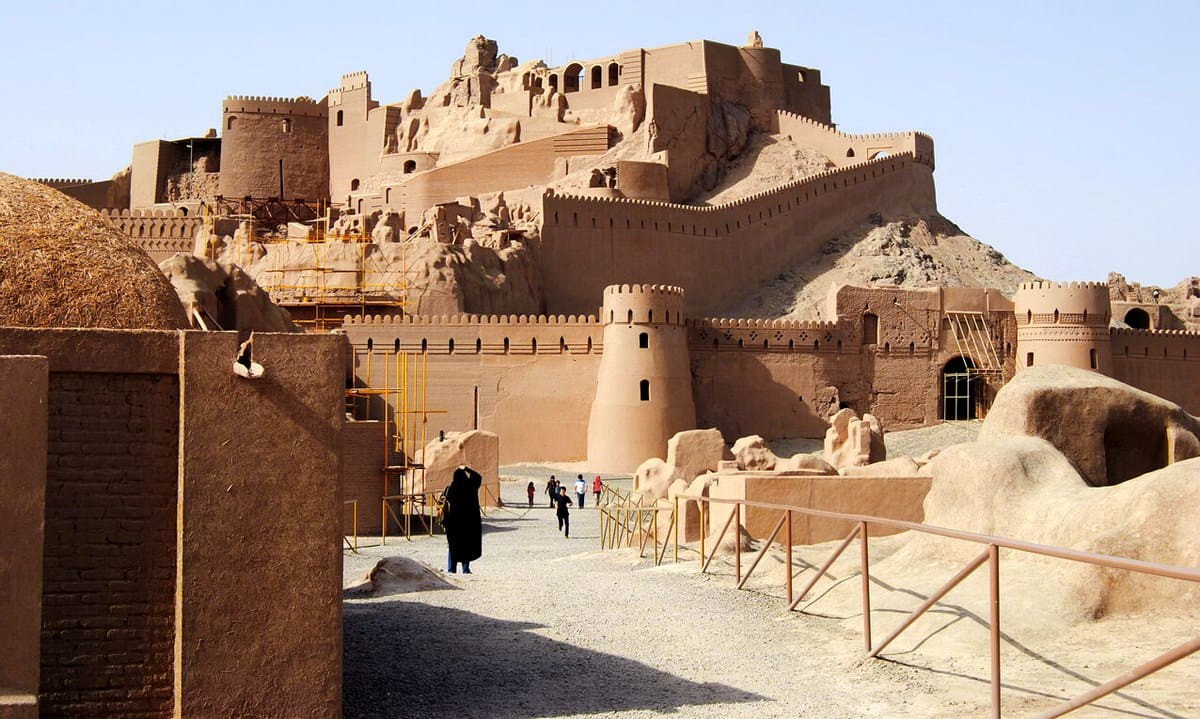Arg-e Bam
Arg-e Bam is the largest city built in raw bricks in the world that has about 2200 years of age. This site is located above the Azarin hill, northeast of today's city of Bam. The surface of the ancient city of Arg-e Bam is about 20 hectares. Around the fortress there was a deep moat that over the centuries defended this urban complex from external assaults.
Among the structures identified in the city of Arg-e Bam there is a main gallery that in the past was a bazar, the remains of a Sasanian fire temple, a historic gymnasium of 'zur khane', public baths, stables, barracks, prisons and the 'Palace of the four seasons'. The common dwellings were built together and connected together. In some private houses the remains of private bathrooms are visible. The stables were located in areas separate from the houses.
Some houses had two floors and this shows that in one of the eras of the past there had been an increase in population. During the Islamic period two mosques were built, called the Friday Mosque and the Mosque of the Prophet Mohammad, and a 'Hoseiniye' (building for the commemoration of the martyrdom of Emam Hosein). The 'Four Seasons Palace' had three floors and was the seat of government, all orders and government rulings were issued by this residence.
The Citadel of Bam (Arg-e Bam), located in a desert area in the southeast of the Iranian plateau, at an altitude of about 1.000 meters, in the province of Kerman not far from the great Lut desert, is the most largest structure in the world built entirely in raw earth. The origins of this extraordinary fortification date back to the Achaemenid period (from the XNUMXth to the XNUMXth century BC), a time when the groundwater collection technique based on a series of underground channels was perfected (i qanats), which allowed the creation of the oasis and its great development as a transit place for the caravans of the Silk Road.
The city had its maximum splendor between the seventh and eleventh centuries, when the great structures were built that have reached today, despite the damage due to destruction and earthquakes. The citadel is the centerpiece of a vast cultural landscape characterized by a series of forts and citadels, no longer in use today, of which Bam is the most representative example. Arg-e bam is a fortified medieval city entirely built with traditional techniques, based on the use of layers of clay (chineh) and sun-dried clay bricks (khesht), with which both the walls and the vaults and domes are made.
Around the central area of the citadel there are other historical structures including Qal'eh Dokhtar (the Maiden's fortress, XNUMXth century), Emamzadeh Zeyd's mausoleum (XNUMXth-XNUMXth century) and Emamzadeh Asiri's mausoleum (XNUMXth century) . In addition, many of the ancient systems survive qanat and remains of cultivated areas, which date back to the Hellenistic period when, after the conquests of Alexander the Great, the region was incorporated into the Seleucid Empire (323-64 BC).
The main components of the archaeological site are: the perimeter walls, with an irregular rectangular plan and sides of 430 × 540 meters, which has 38 watchtowers; the great Governor's Quarter on a rocky hill 45 meters high, surrounded by a double wall of fortifications, inside which are the governor's residence, the Chahar-fasl, a pavilion from the Safavid era (XNUMXth century) and the structures that housed the garrison; finally, the large residential district, built with a checkerboard urban layout, in which there is a vast bazaar, the great mosque, probably one of the oldest in Iran (XNUMXth-XNUMXth century, rebuilt in the XNUMXth century) and the houses.
Outside the fortified area there is a large icebox (yakhchal), covered by a clay brick dome, which kept the ice produced in winter in a nearby swimming pool in the hot season. Although archaeological research has shown that the area was populated in the Achaemenid era, the founding of the city is attributed to Haftvad, a perhaps legendary character, who lived at the time of the founder of the Sassanid Empire (224-651 AD), Ardashir Babakan, who he would bring the silkworm to Bam and thus start the fortune of the city.
Bam is mentioned for the first time by Islamic sources in the 1213th century, as a famous place for the production of silk and cotton clothes. Passed, after the fall of the Sassanid Empire, under the dominion of the Lower Caliphate (VIII-XIII century) and then of the Empire of the Seljuk Turks (XI-XIII century), it fell in 1314 under the dominion of a local potentate, the Lordship of Zuzan, who had the defensive walls destroyed, and later of Mubariz al-Din Muhammad, founder of the Muzaffarid dynasty (1393-XNUMX).
Around 1408-09 it was occupied by a Timurid general who had the walls rebuilt and repopulated the city. The long period of peace that followed was only interrupted by the Afghan invasions in the first half of the 100th century, after which the city returned to the control of the ruling dynasty of Persia, the Qajars. In the nineteenth century the city expanded outside the citadel, reaching, in contemporary times, the 30 thousand inhabitants. In fact, the citadel was abandoned and remained under the control of the army until the XNUMXs, when the site was declared of national interest and consolidation and restoration works began.
Starting from the 70s, the citadel was the subject of important works, with reconstructions of missing parts and many buildings. On December 26, 2003, the city of Bam was hit by a very strong earthquake that destroyed over 75% of the houses, killing over 26 thousand. The citadel suffered serious damage, almost all the restored or reconstructed structures were destroyed and the walls suffered extensive damage. The severity of the damage suffered required the start of a consolidation campaign, accompanied by archaeological research which, having access to previously invisible layers, led to important discoveries, including the remains of settlements dating back to the Parthian domination (247 BC-224 AD) and structures from the Hellenistic period.
Many countries participated in the reconstruction work, in parallel with which the restoration of the citadel was also started, now at a very advanced stage. Italy has offered financial contributions through Unesco and mobilized the expertise of the Central Institute for Restoration. The charm of the citadel of Bam and its historical landscape has inspired artists and writers over the centuries. Pier Paolo Pasolini chose Bam as the background for some scenes from the "Flower of the Thousand and One Nights" and the citadel inspired the scenario of the film "The Desert of the Tartars" based on the novel by Dino Buzzati, with the realization of a similar set nearby to the original, which can still be visited.



